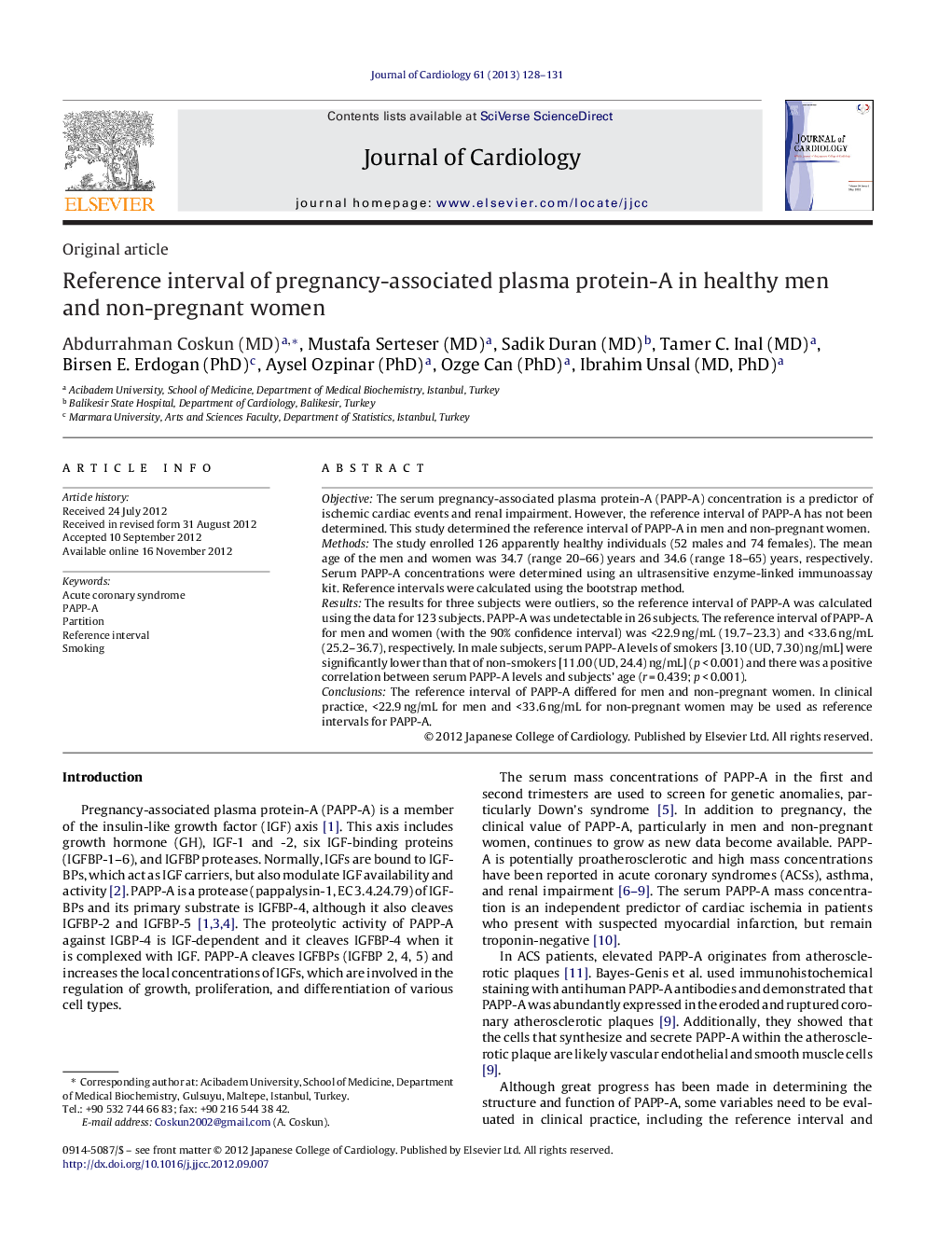| Article ID | Journal | Published Year | Pages | File Type |
|---|---|---|---|---|
| 5984217 | Journal of Cardiology | 2013 | 4 Pages |
ObjectiveThe serum pregnancy-associated plasma protein-A (PAPP-A) concentration is a predictor of ischemic cardiac events and renal impairment. However, the reference interval of PAPP-A has not been determined. This study determined the reference interval of PAPP-A in men and non-pregnant women.MethodsThe study enrolled 126 apparently healthy individuals (52 males and 74 females). The mean age of the men and women was 34.7 (range 20-66) years and 34.6 (range 18-65) years, respectively. Serum PAPP-A concentrations were determined using an ultrasensitive enzyme-linked immunoassay kit. Reference intervals were calculated using the bootstrap method.ResultsThe results for three subjects were outliers, so the reference interval of PAPP-A was calculated using the data for 123 subjects. PAPP-A was undetectable in 26 subjects. The reference interval of PAPP-A for men and women (with the 90% confidence interval) was <22.9 ng/mL (19.7-23.3) and <33.6 ng/mL (25.2-36.7), respectively. In male subjects, serum PAPP-A levels of smokers [3.10 (UD, 7.30) ng/mL] were significantly lower than that of non-smokers [11.00 (UD, 24.4) ng/mL] (p < 0.001) and there was a positive correlation between serum PAPP-A levels and subjects' age (r = 0.439; p < 0.001).ConclusionsThe reference interval of PAPP-A differed for men and non-pregnant women. In clinical practice, <22.9 ng/mL for men and <33.6 ng/mL for non-pregnant women may be used as reference intervals for PAPP-A.
